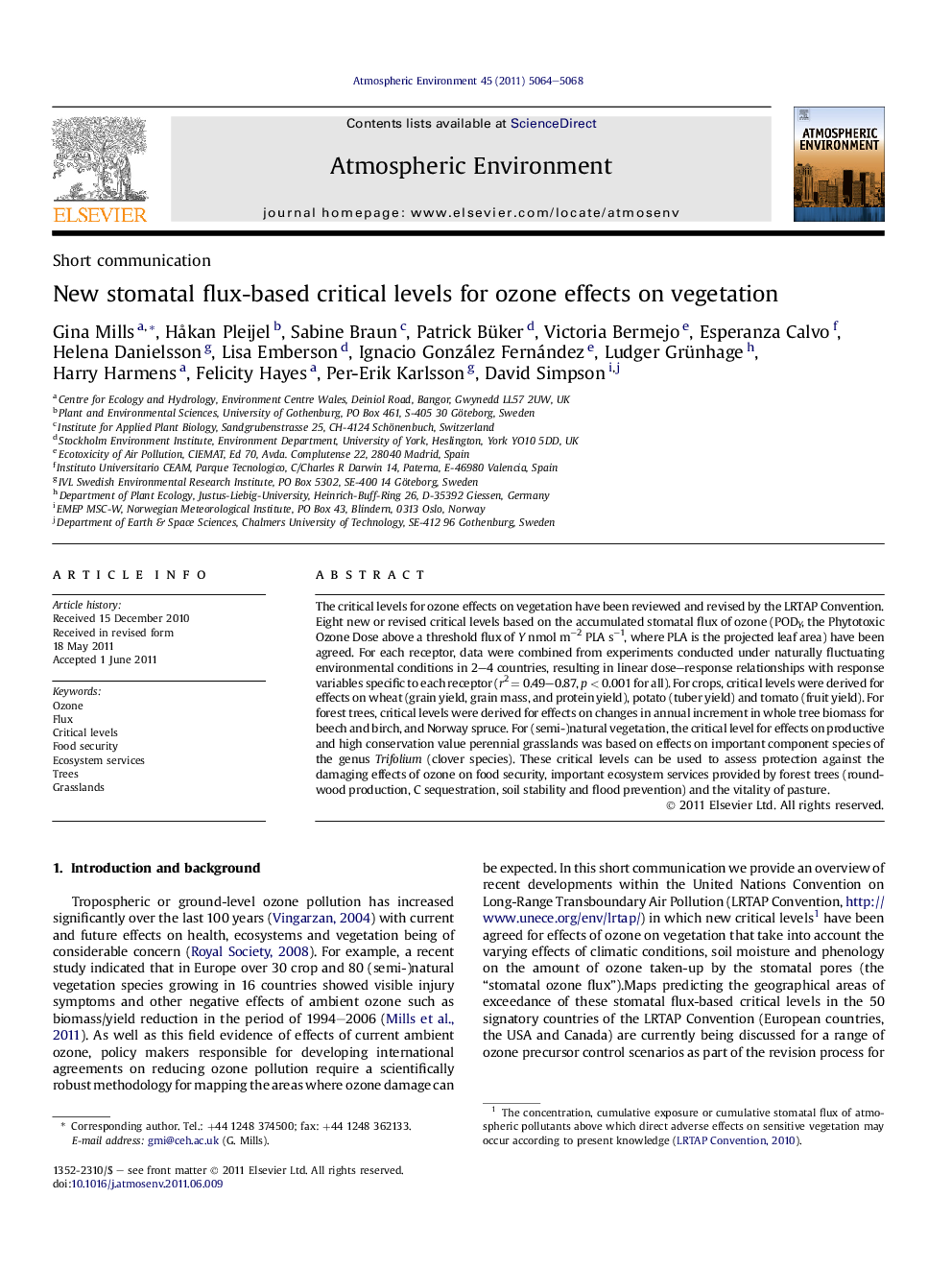| Article ID | Journal | Published Year | Pages | File Type |
|---|---|---|---|---|
| 4439616 | Atmospheric Environment | 2011 | 5 Pages |
The critical levels for ozone effects on vegetation have been reviewed and revised by the LRTAP Convention. Eight new or revised critical levels based on the accumulated stomatal flux of ozone (PODY, the Phytotoxic Ozone Dose above a threshold flux of Y nmol m−2 PLA s−1, where PLA is the projected leaf area) have been agreed. For each receptor, data were combined from experiments conducted under naturally fluctuating environmental conditions in 2–4 countries, resulting in linear dose–response relationships with response variables specific to each receptor (r2 = 0.49–0.87, p < 0.001 for all). For crops, critical levels were derived for effects on wheat (grain yield, grain mass, and protein yield), potato (tuber yield) and tomato (fruit yield). For forest trees, critical levels were derived for effects on changes in annual increment in whole tree biomass for beech and birch, and Norway spruce. For (semi-)natural vegetation, the critical level for effects on productive and high conservation value perennial grasslands was based on effects on important component species of the genus Trifolium (clover species). These critical levels can be used to assess protection against the damaging effects of ozone on food security, important ecosystem services provided by forest trees (roundwood production, C sequestration, soil stability and flood prevention) and the vitality of pasture.
